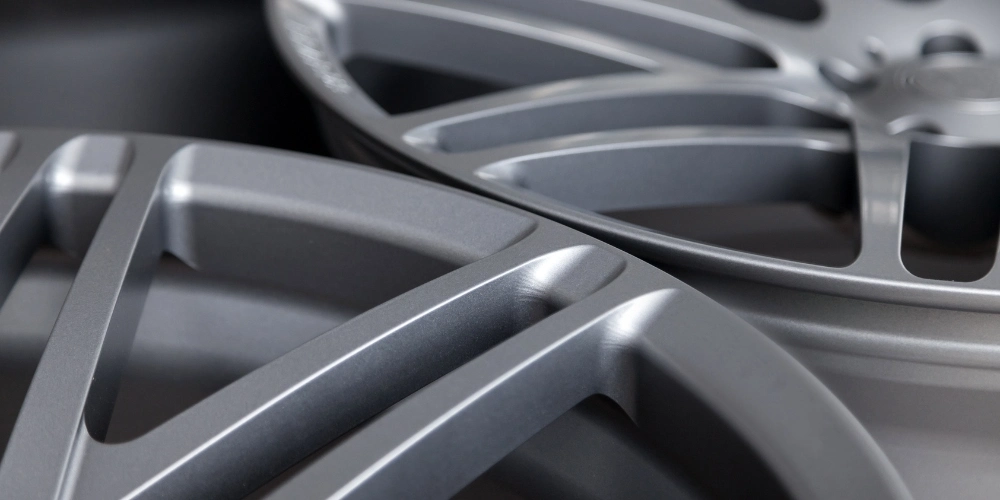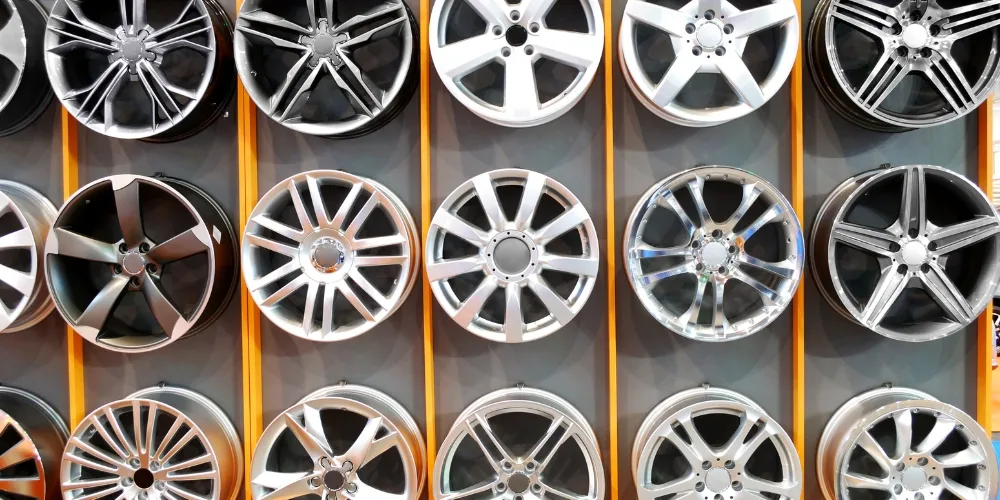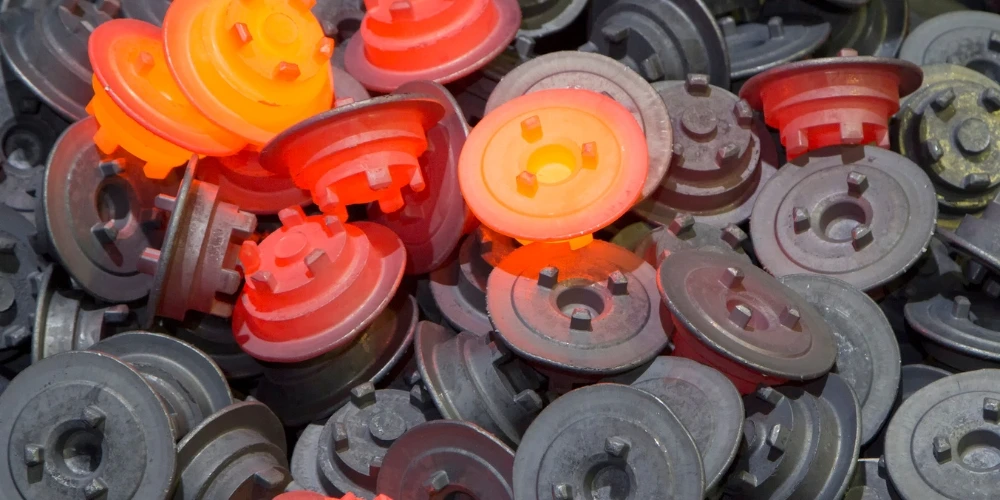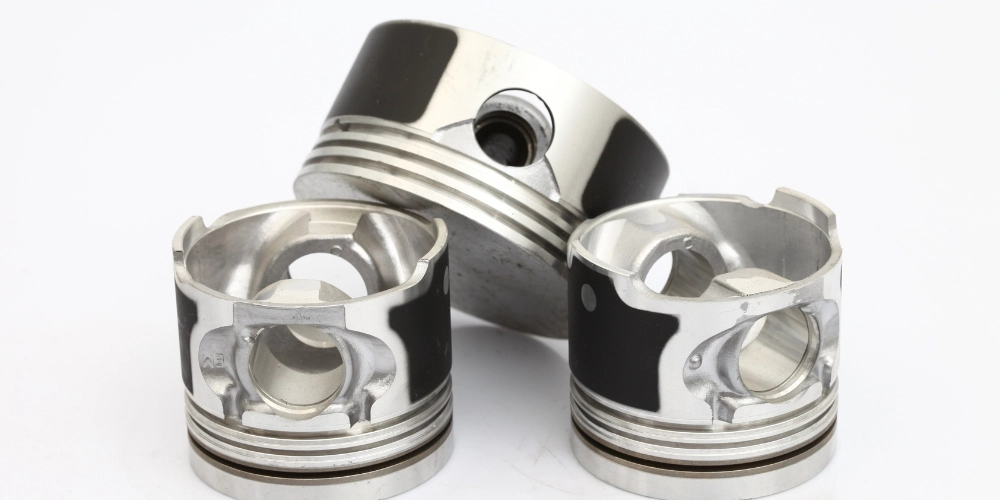Table of Contents
Overview
Aluminum forging is one of the major processes to create lightweight but energy-efficient secure parts. Forging uses a highly pressurized process for aluminum which gives it a better durability and tight microstructure. As a result, it gives you the freedom for your vehicle parts as far as you like.

Understanding Aluminum Forging
Forging is a process associated with pressure. Any metal can be forged with extreme pressure to be pressed or pounded. As a result, a squeezed high-strength part is produced with better durability. With aluminum forging, you get parts with high durability and strength but lightweight and energy-efficient. Aluminum has been forged for a long time for its good properties that align with the processes of forging.
The Benefits of Using Aluminum For Forging
Aluminum forging can be very useful. As a material, it’s in perfect resonance with the criteria a material needs to fulfill for becoming a good forging material.
- Aluminum naturally has low density. As a result, it can be forged in low temperatures. The capacity of retaining is not very high. So, you may need the cooling system necessary for the working area. Although alloys may vary at melting points, most of the alloys have similar low melting points to work with.
- While forging, you may need to turn the aluminum billet into a cast grain structure. Without that, many applications cannot be executed. As is cast billets, porosity can prevail. This is the feature of having air pockets in between aluminum grains. This is reduced or totally demolished by forging.
- Aluminum forging is subject to a lower flow of stress than other materials and has high ductility which makes it best for hydraulic presses and working with lower rates of cracks. Even saw cutting can be privileged with aluminum forging. As a result, you can use it as one of the best materials for forging.
- Maintaining isothermal conditions, you can use very low speed while forging, which gives better chances with sustainable pieces of machinery. This helps to create very complicated shapes. Mostly the process is called precision forging.
 The Process Of Aluminum Forging
The Process Of Aluminum Forging
You can use various methods for aluminum forging. But mostly three kinds of processes are used for forging. Even at times, two processes are combined to create balance while forging. The three most popular methods of forging are –
- Open-die Forging
- Closed-die Forging
- Rolled-ring Forging
Following is a brief step-by-step procedure for your understanding of the process for aluminum forging:
- First of all, cast aluminum or wrought stock is prepared to be used as forging stock for aluminum. The stock is made out of bar or plate or any other raw form of aluminum with the help of shearing or sawing.
- Secondly, the stock is preheated for forging. It may be done with furnaces run by gas or electrical power. Depending on the alloy and thickness of the material, heating time may differ from time to time.
- Thirdly, heating of dies is done with precision.
- Fourth, you need to lubricate the die and workpiece material for the best results. Graphite is mostly used in the lubrication process. Sometimes, various organic, as well as non-organic materials, are mixed with it for lubrication.
- Then, the die and the workpiece are used for pressing with high pressure for forging the aluminum stack. This is the main part of forging and must be done with utmost care and precision.
- Fifth, before finishing, necessary forming and trimming treatment is given to the forged aluminum.
- Lastly, cleaning is done for removing unwanted lubricant and residue as well as heat treatment is implemented by gas-based fire, electrical, or any other manner for giving it the best finishing possible.
All of these steps are followed step by step in the process of aluminum forging. 
Aluminum Alloys Used in Forging
Most of the aluminum alloys are very useful for forging. Some of them are briefly described below:
- Aluminum alloys like 2618, 2219, 2025, and 2015 all are very useful for forging. The alloys have 1-5% copper. Sometimes in this series, Magnesium is also added. It helps to strengthen the alloy after heat treatment.
- Aluminum alloy 5083 is another very important alloy for forging which has a Magnesium percentage.
- Aluminum consisting of 5-8% Zinc is most commonly used for forging like 7079, 7075, 7050, 7049, 7039, and 7010.
- The most forgeable aluminum alloy is 6061. It has copper, silicon, and magnesium percentage for better durability, ductility, low flow strength, and good forgeable temperature.
Main Application For Aluminum Forging
Forged aluminum is great for you if you are looking for a lightweight but energy-efficient material. For these two features, the main application of aluminum forging is used where speed is necessary mainly – for producing vehicle parts. You can create various motorbike parts, car parts with aluminum forging.

Above all forged aluminum is often used in aircraft parts which gives it a different class than any other material.
Types Of Aluminum Forging
Aluminum is one of the best materials to work with for forging. There are various types of forging methods available. They are being used regularly for forging.
Among all forging methods, mainly three methods are used regularly. You can also use two of the methods together to create balance.
The methods are mentioned below:
- Open-die Forging
- Closed-die Forging
- Rolled-ring Forging
These are the main types of Aluminum Forging.
The Strength of Aluminum Forging Components
Forging Aluminum takes high pressure. Which actually changes the microstructure of the material and makes it more durable and of high ductility. Such aluminum is heat treatable. The internal voids are gone and can be easily used to create highly strong parts.
Aluminum forging gives it a 24-26% higher tensile strength as well as 35-37% higher fatigue strength than cast aluminum. As a result, it always wins the race compared to cast aluminum. The lifespan and durability are naturally high for forged aluminum parts.
Compared to steel, it has a weight of one-third of the same volume of steel. As a result, the forged aluminum parts are stronger as pressed.
Among all the strong alloys of aluminum, 7086 aluminum alloy, which is used basically in aircraft, is one of the strongest. It is stronger than cast aluminum or steel.
Overview of Open-Die Forging
Open-die forging is a forging process where part or parts of the workpiece material is kept open and clearly visible while working. The forging process is very useful for the production of small quantities of aluminum parts. The metal is put between multiple dies at multiple stages where the open die does not completely enclose the process of forging.
The metal is hammered or stamped or can go through both processes until the forging turns it into the desired shape. Most of the time, open-die forging requires further processing of the parts through other kinds of forging or finishing processes.

Overview of Closed-die Forging
Materials that go through closed-die forging may need preheating for the die as well as the material itself. Then it is entered into a closed die where metal parts are completely engulfed by the die. Extreme pressure is induced for forging and then the metal gets the perfect shape of the enclosed die. At closed-die forging –
- Better finishing may be achieved
- Good for higher quantity production than open-die forging
- Grain structure formation is increased, as a result, tightness of material is gained
- Complex shapes can be achieved through extreme pressure
Closed-die forging can be of various types itself:
- Blocker-type forgings, where the materials go through a single set of dies. The method is pretty inexpensive and is good for high quantity production where an adequate finishing is alright.
- Conventional closed-die forgings, where the forging takes higher pressure for high durable parts. It is forged in blocker-type dies and then goes through good finishing procedures. As a result, it may be a little expensive but the most popular forging method right now. Only two steps make a better and more durable part.
- High definition forgings are more expensive as you need more than one set of dies and blockers, as well as finish, dies to complete the whole process. The method is used to produce more accurate shapes for parts.
- Precision Forging consists of forging, machining as well as fabrication which is much more expensive than high definition forging as well as the best accurate forging there is. Aluminum forged by this process may go through two or three die sets to get the perfect result possible.
Overview of Rolled-ring Forging
Rolled ring forging is a process where you can see aluminum hollow doughnuts being heated and pressured under extreme pressure to give them the desired shape.

These metal parts are already shaped through open-die forging as well as upset die-forging. These two methods give the metal a ring-shaped or doughnut shape with a hollow in the middle. Then it is used for forging the desired shapes while being rolled.
The Difference Between Aluminum Forging And Aluminum Casting
Aluminum forging and aluminum casting are two methods used to give aluminum the perfect shape possible. Let’s see what differences these two methods have:

| Aluminum Forging | Aluminum Casting |
| Aluminum is forged through extreme pressure | Aluminum casting is done by melting the aluminum |
| Forging is good for smaller parts | Casting is good for larger parts up to 16-18 inches |
| Forging removes air pockets thus gives better ductility to aluminum | Casting does not remove air pockets as pressure is not as much applied |
| Forging makes aluminum stronger – 24-26% tensile strength than cast aluminum | Casting aluminum does not make it as much strong as forging |
| Forging is good for tighter grain structure and better durability | Casting is good for larger parts and has moderate durability |
Difference Between Billet Aluminium And Forged Aluminium
Aluminum and forged aluminum have some differences to work with. Because of lower melting points, aluminum is good for forging. Following are some points that make forged aluminum different from general aluminum:
Firstly, forged aluminum is much tighter in grain microstructure than normal billet aluminum as it goes through high pressure through dies and other stages. As a result, it is better quality, to begin with.
Secondly, when it comes to functionality, billet aluminum is not much different from forged aluminum. Both can be used for making the same workpiece. But forged is more aesthetic than billet aluminum.
Thirdly, forged aluminum does have better durability than billet aluminum as forged aluminum is pressurized at better shapes.
For these reasons, billet aluminum is different from forged aluminum.
The Achievable Precision of Aluminum Forging
Achievable precision of aluminum forging depends on the chosen method, quality of tooling and dies, material properties tolerances surface finish need are when such stringent critical control measures applied. By using precision CNC machined dies, closed-die forging provides better accuracy than open die which employs high pressures on the material. Precision in shaping is determined by the choice of an adequate aluminum alloy, forging temperature adjustment and observance of tolerances. Applications have specific requirements and must consider costs, so it is important to collaborate with experts who can tailor the process.
Choose The Right Aluminum Forging Service
It is very important to choose the right aluminium forging service that depends on some essential points. On first, judge the forging processes used which closed-die process is more precise than open die methods. Appraise the adequacy of tooling and dies, emphasizing services which employ CNC to ensure enhanced precision. Know the capability of handling various aluminum alloys, since it is a choice in terms of what type of aluminium will be used for your final product. Deliverability should be guaranteed by ensuring that the service is cal However, ask how they ensure quality control to maintain uniform reliable results. Cost factors should reflect the necessary level of accuracy and general project needs. Finally, a comprehensive consideration of such factors will provide you with information that can help to determine the best aluminum forging service for your needs.
Cost Considerations When Custom Aluminum Forging Parts
In regard to the price associated with custom aluminum forging parts, there are several factors that one must consider.
- Aluminum Alloy Choice: The different alloys have a wide range of cost depending upon their characteristics and availability.
- Forging Process Complexity: The complexity of design and the degree of precision needed affect final cost.
- Tooling and Die Expenses: CNC machining, in particular high quality tooling, adds to costs.
- Post-Forging Processes: Processes such machining or surface finishing may attract additional costs.
- Material Waste: Waste minimization is cost control as a result of undertaking an efficient forging process.
- Quantity and Scale: As a result, economies of scale and lower per-unit costs may be achieved with larger production quantities.
- Quality Assurance Measures: Although investing in accurate quality control may increase initial costs, proper implementation guarantees reliability.
- Collaboration with Forging Service: This is a close partnership aimed at smoothening processes and not compromising quality in order to ensure cost-effectiveness.
- Precision vs. Budget Balance: It is important to maintain a balance between precision needs and limitations associated with the budget for cost-effective customization.
 Conclusion
Conclusion
Forging aluminum is a useful process for making good aircraft and car parts. The parts are durable and of high ductility. Besides, lightweight is another aspect of aluminum. As a result, aluminum is being popular day by day as a good material for forging.




